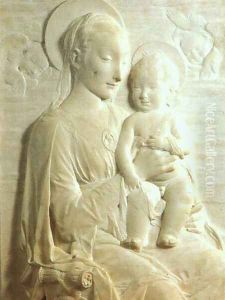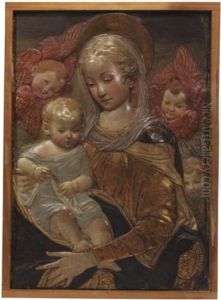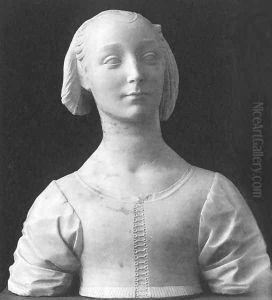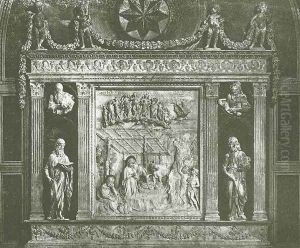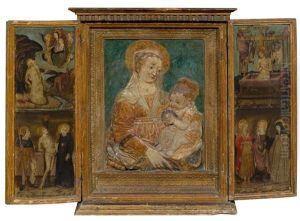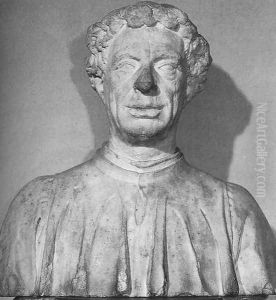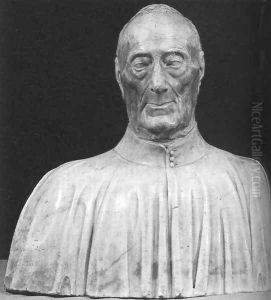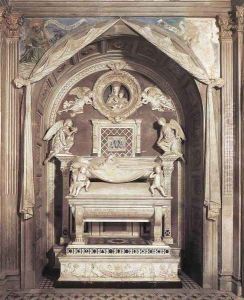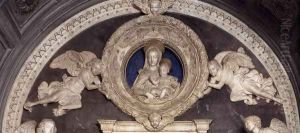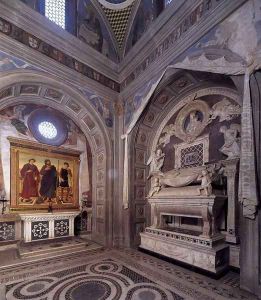Antonio Rossellino Paintings
Antonio Rossellino, born in Settignano, near Florence, Italy, in 1427, was a distinguished figure in the early Renaissance period, renowned for his exquisite work in sculpture. He was the younger brother of the renowned architect and sculptor Bernardo Rossellino, and it is believed that he trained under him, absorbing the principles of the early Renaissance style that emphasized harmony, proportion, and the study of the human figure. Despite often being overshadowed by his brother, Antonio developed a unique artistic style that emphasized delicate, refined details and a tender expressiveness, particularly in his portrayals of children and the Madonna.
Rossellino's career was marked by several notable works that showcased his mastery over marble. Among his most celebrated sculptures is the tomb of the Cardinal of Portugal, James of Lusitania, in the Church of San Miniato al Monte in Florence, completed around 1461-1466. This work, characterized by its serene beauty and the graceful depiction of figures, exemplifies Rossellino's skill in creating lifelike, emotive sculptures that communicate a deep sense of piety and devotion. His ability to render the textures of flesh and fabric in marble brought him considerable acclaim during his lifetime.
In addition to funerary monuments, Rossellino also excelled in creating busts, altarpieces, and small devotional sculptures, often depicting the Virgin Mary with a sweetness and intimacy that were highly sought after by his contemporaries. His works are distinguished by their fine craftsmanship and the gentle, serene expressions he bestowed upon his subjects, reflecting the humanist interests of the period in individual personality and inner life.
Rossellino's influence extended beyond his lifetime, contributing to the development of the Renaissance style in sculpture. His approach to sculptural composition, his treatment of surface textures, and his ability to convey subtle emotional nuances through marble significantly impacted the evolution of Italian Renaissance art. Despite his relatively short life—he died in 1479 in Florence—Antonio Rossellino's legacy endures through his contributions to the art of sculpture, ensuring his place among the eminent artists of the Renaissance.
